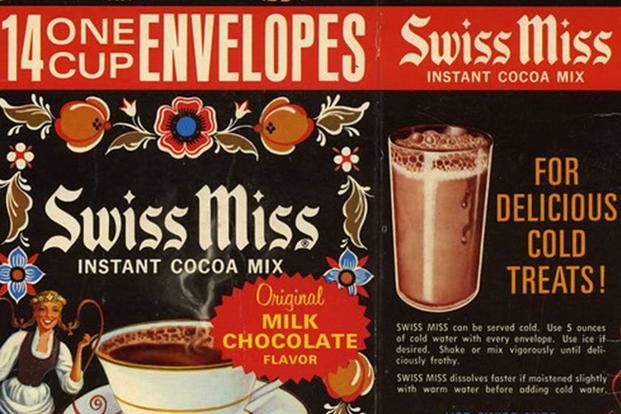Navy veteran and engineer Charles Sanna didn’t invent hot chocolate, but he changed the way Americans make it.
For centuries, hot drinking chocolate was a beverage of the world’s elite aristocracies. Cocoa was expensive, and even as world trade in the commodity grew and made it cheaper for the masses, the process of actually making drinking chocolate was rather labor intensive. For most, it meant adding cocoa powder or chopped chocolate to heated milk and sugar — and anyone who has attempted to boil milk can tell you it requires constant attention.
This might be fine for the casual drinker, but for the American consumer, it just won’t do. When Sanna realized he could turn an excess of his company’s coffee creamer into instant packets for soldiers fighting in the Korean War, his invention proved an overnight sensation.
Sanna’s first step toward instant cocoa mix came in the 1950s, when he developed a means of extending the shelf life of dehydrated, powdered, sweetened whole milk coffee creamers. By reducing the amount of oxygen in the packets, the milk could now last for years. This caught the attention of Army leaders who wanted to use the product for field use.
Sanna’s family company, Sanna Dairy Engineers, was contracted by the U.S. government to make powdered coffee creamer for American troops fighting in Korea. The contract stipulated a harsh penalty if they were undersupplied, so the company made an astounding surplus to ensure it met the requirements. In addition, none of the company’s overstock could be used to fill future orders, compounding the surplus.
The contract left Sanna with a huge overstock when the war ended in 1953, but the entrepreneurial spirit inside the former Navy engineer wouldn’t let it go to waste. He began experimenting with the packets in his Wisconsin home, consulting the family cookbook, his own taste buds and his children as product testers. He even considered the source of the cow for its milkfat content.
“I believed that it would make an excellent ingredient for a hot cup of cocoa,” he told The New York Times in a later interview. “I consulted the family cookbook and determined the best proportions of creamer, sugar, cocoa and vanilla. … The lab promptly came up with the finished product. It was delightful!”
The product the lab finished was called Brown Swiss, so named after a breed of cattle in Switzerland (though the milk came from Wisconsin-grown Holsteins). Sanna marketed his new product to restaurants and airlines, but found there was a healthy consumer market after those same restaurants and airlines complained their customers were stealing the hot cocoa packets to use at home.
So Sanna went back to the drawing board with this new customer base in mind. The use of his powdered creamer had a high butterfat content, which caused it to go bad, so he replaced the creamer with soluble nonfat milk powder. This switch made the product last longer on store shelves. The new instant cocoa mix, meant for mugs in home kitchens, was branded Swiss Miss in 1961 and could be made with just hot water.

Swiss Miss was purchased by Beatrice Foods in 1967, which was in turn sold to ConAgra Foods in 1990. Sanna died on March 13, 2019, at age 101, grateful that his creation was so beloved by so many people.
Want to Learn More About Military Life?
Whether you’re thinking of joining the military, looking for post-military careers or keeping up with military life and benefits, Military.com has you covered. Subscribe to Military.com to have military news, updates and resources delivered directly to your inbox.
Story Continues
Read the full article here

